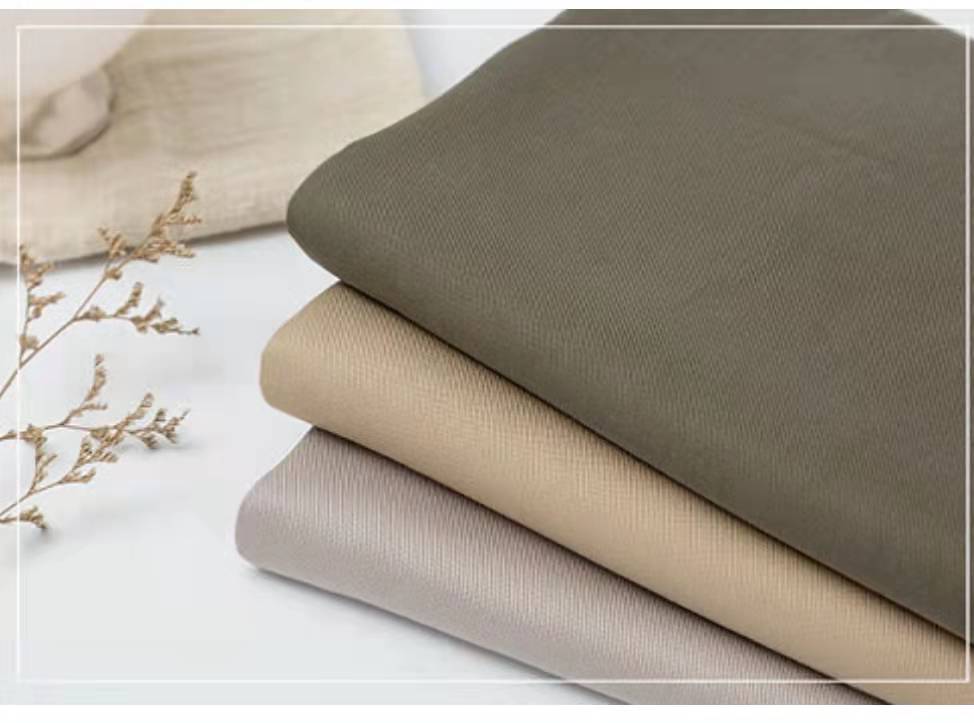
At Paris Fashion Week, Stella McCartney once again blurred the line between fashion and science. Her latest innovation, denim that actively purifies the air marks a radical evolution in the sustainability narrative. In partnership with the material technology company Pure.tech, McCartney unveiled garments that don’t just minimize environmental harm; they repair it.
Debuting as part of her Summer 2026 collection, the new line showcased fabrics engineered to capture and neutralize pollutants such as carbon dioxide (CO₂), nitrogen oxides (NOx), and volatile organic compounds (VOCs). The concept turns every wearer into a walking air filter transforming fashion from a passive consumer product into an active environmental participant.
Inside Pure.tech, turning fabric into a pollution filter
The brain behind Pure.tech Italian technologist Aldo Sollazzo, has developed a patented water-based slurry compound that can be applied to textiles through traditional processes such as foulard, padding, or coating. Once integrated, the treatment initiates a continuous process of catalysis and photocatalysis, breaking down toxic gases into harmless minerals.
Independent laboratory tests reveal striking efficiency: a mere 30-gm fabric sample can eliminate over 2,200 ppm of CO₂ in under 10 hours. In urban terms, that means a single jacket or pair of jeans could offset small-scale emissions in a city environment, while millions of such garments could meaningfully reduce air pollution levels. “This isn’t about reducing our footprint, it’s about reversing it,” McCartney said during the Paris launch. “We’ve always talked about sustainable fashion; this is regenerative fashion.”
The science of self-cleaning textiles
Behind the glamour of the runway lies a serious scientific backbone. The principles powering Pure.tech come from environmental engineering and nanotechnology, long applied in air-purifying paints and architectural coatings.
Photocatalysis: Often driven by compounds like titanium dioxide (TiO₂), photocatalysis uses light energy to generate electrons that break down pollutants. This reaction decomposes NOx and VOCs into inert compounds.
Catalysis: Here, the treated fabric acts as a catalyst, boosting pollutant breakdown without being consumed and allowing garments to maintain their functionality over time. These hybrid reactions create a regenerative loop, allowing clothing to operate as a low-maintenance, continuous air-cleansing system.
A growing movement, where textiles go beyond aesthetics
McCartney’s Pure.tech denim is the latest step in a broader shift toward functional sustainability, where materials don’t just avoid damage they deliver benefits. Several earlier experiments have paved the way for this new generation of ‘pollution-eating’ fashion.
Catalytic clothing project (2008)
A collaboration between the London College of Fashion and the University of Sheffield, this initiative applied photocatalytic titanium dioxide coatings to fabrics via laundry processes. The vision was simple yet bold, transform everyday garments into urban air purifiers activated by light.
Post Carbon Lab’s living algae fabrics
London-based Post Carbon Lab developed textiles infused with photosynthetic micro-organisms like algae. As wearers move, the living coating absorbs CO₂ and releases oxygen, mimicking the respiration of plants. The studio claims a single treated T-shirt can produce as much oxygen as a young oak tree.
Airlite, McCartney’s earlier experiment
In her Winter 2024 collection, McCartney used Airlite coating on her iconic Falabella tote bags. The semiconductor-based technology generates a surface charge that produces negative ions, neutralizing pollutants in contact with the bag an early glimpse of the direction her brand would later take to scale the idea into apparel.
Fashion’s new frontier, regenerative luxury
The introduction of Pure.tech denim and Fevvers, a plant-based alternative to feathers, marks an important moment in McCartney’s journey, and potentially, for fashion itself. Her approach exemplifies the next stage of sustainable design: from carbon-neutral to carbon-negative. This shift aligns with a larger industry trend. Global luxury and performance brands are investing heavily in bioengineered materials, circular manufacturing, and climate-positive textiles. Analysts predict that the regenerative fashion market could grow from a niche innovation sector into a $20 billion global opportunity by 2030, as consumer demand for climate-conscious luxury accelerates. “We are entering an era where clothes are not just worn, they work,” says Sollazzo. “When the surface of your jeans helps purify the air you breathe, fashion becomes infrastructure.”
Toward a smarter, cleaner wardrobe
The implications go far beyond aesthetics or personal branding. Imagine urban networks of wearers, each garment quietly filtering carbon and nitrogen compounds as people go about their day. Scaled up, such technology could complement existing clean-air initiatives, from green roofs to low-emission zones.
What began as a creative experiment on the Paris runway could soon evolve into a scalable environmental solution transforming fashion into a distributed system of micro air purifiers. As Stella McCartney’s Pure.tech denim highlights, the most powerful trends in fashion are no longer about hemlines or hues they’re about how fabric interacts with the planet itself.











